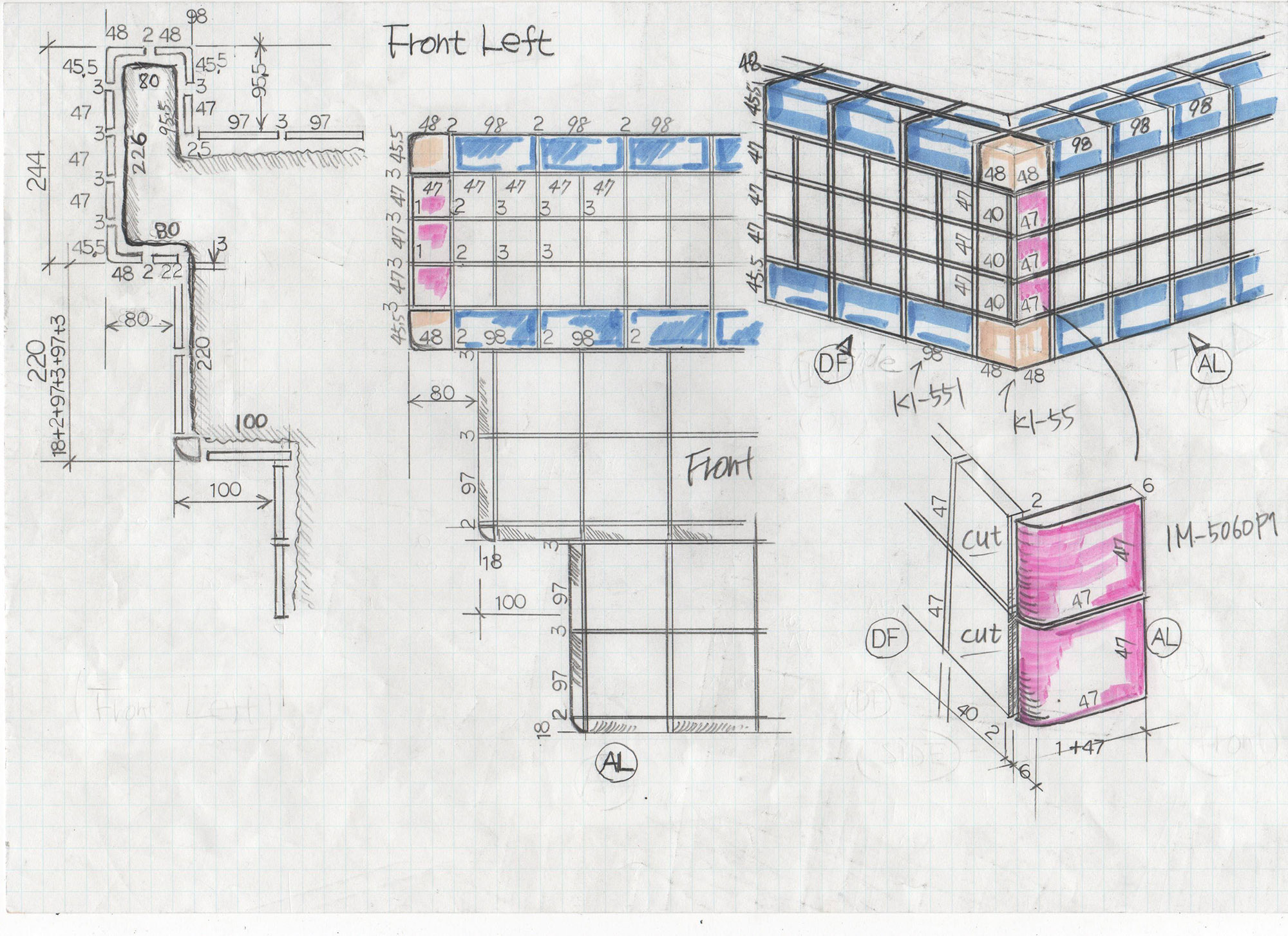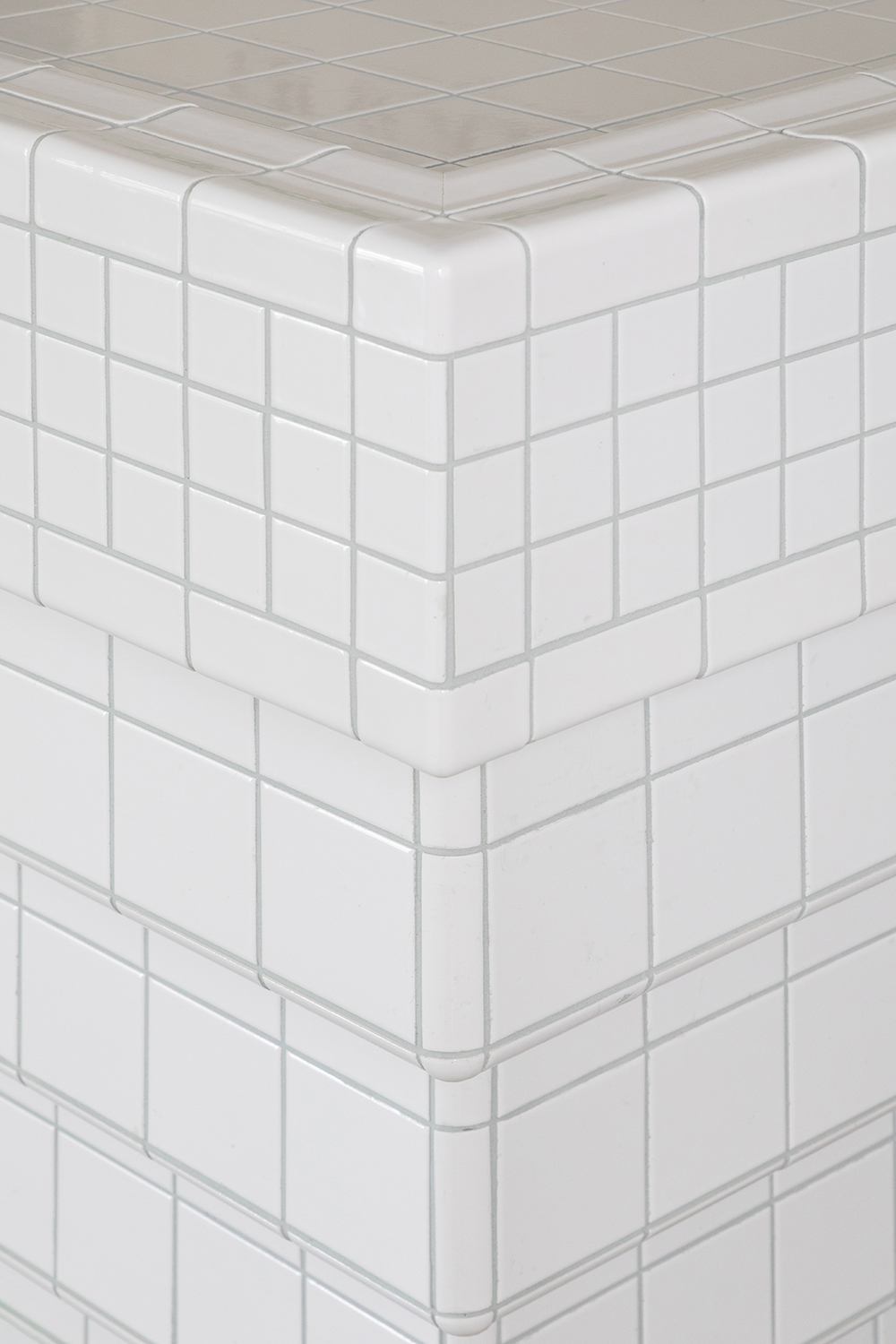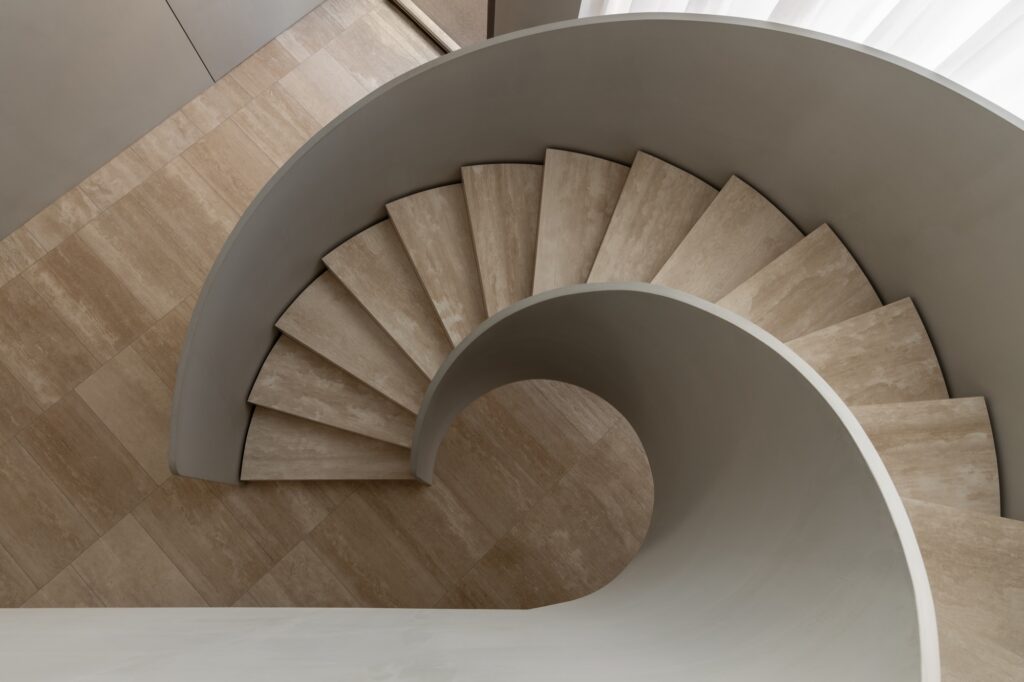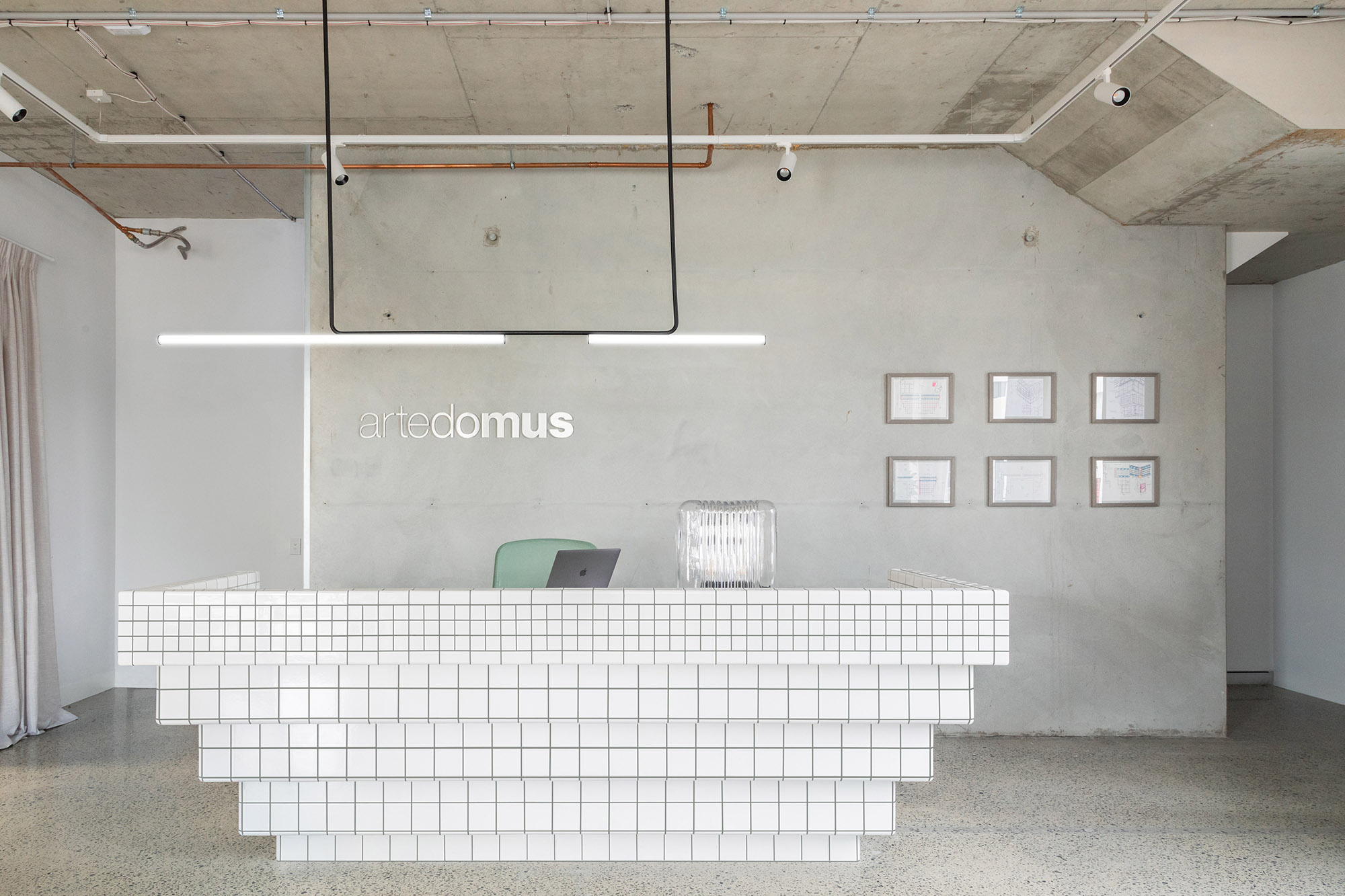
Interview by Alice Blackwood
Drawings courtesy of Tomoyuki Koyama and INAX
Photography by Joanne Ly and Renae Roberts
When Thomas Coward, designer and creative director at Artedomus, embarked on the design of a new reception desk for Artedomus’ Perth showroom, he was looking to make a statement. “Each new Artedomus showroom has given us an opportunity for a unique reception desk. I wanted to do something specific to Perth and, from a run up the steps at Jacob’s Ladder, an idea was formed,” says Thomas.
For those who don’t know, Jacob’s Ladder refers to a steep staircase that stretches up the side of Ladder Hill in Saint Helena; the name – a biblical reference to a stairway extending up to heaven. The staircase tracks a steep, diagonal incline up the side of the hill, appearing almost pyramid-like. And here we begin to understand the form of Thomas’ Stepped Reception Desk.
As Thomas describes it, the desk is “an inverse stepped form, anchored to the floor with a series of cantilevered levels that widen out to a workable surface”. And it’s seamlessly clad in INAX Nuance tiles. Thomas worked closely with Tomoyuki Koyama, sales and senior technical advisor at INAX, to achieve his design vision. Koyama san, who is considered by many to be a tile master, shares a rare view of his process. Here is how it all came together –
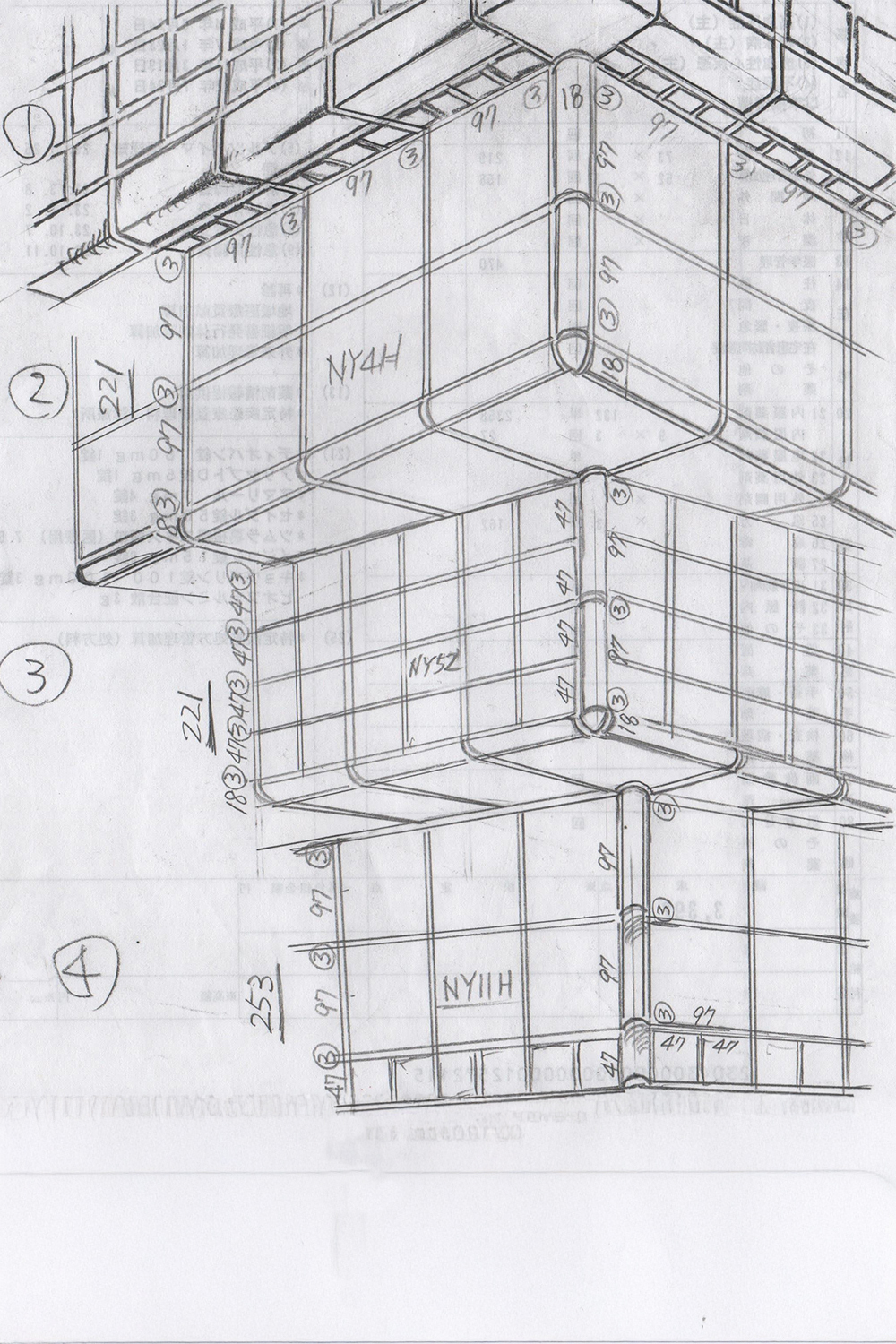

Koyama san, what was your initial impression, when Thomas sent you the design drawings for his Stepped Reception Desk?
In a word, astonishing: An inverted triangular desk expanding from a narrow base to the sky. This was viewed not as desk creation, but as art creation. Due to the limited trim shapes of INAX tiles, it was challenging to meet the complex requirements. Drafting layout drawings was a tough task, but the actual tile installation was even more difficult.
Thomas, how do the INAX tiles accentuate the desk’s design?
The tiles’ adaptability allowed me to think in a more three-dimensional way. Rather than just cladding a flat or curved surface, the coving pieces gave the opportunity for distinct forms and purposeful surfaces, such as the privacy ledge that surrounds the desk level.
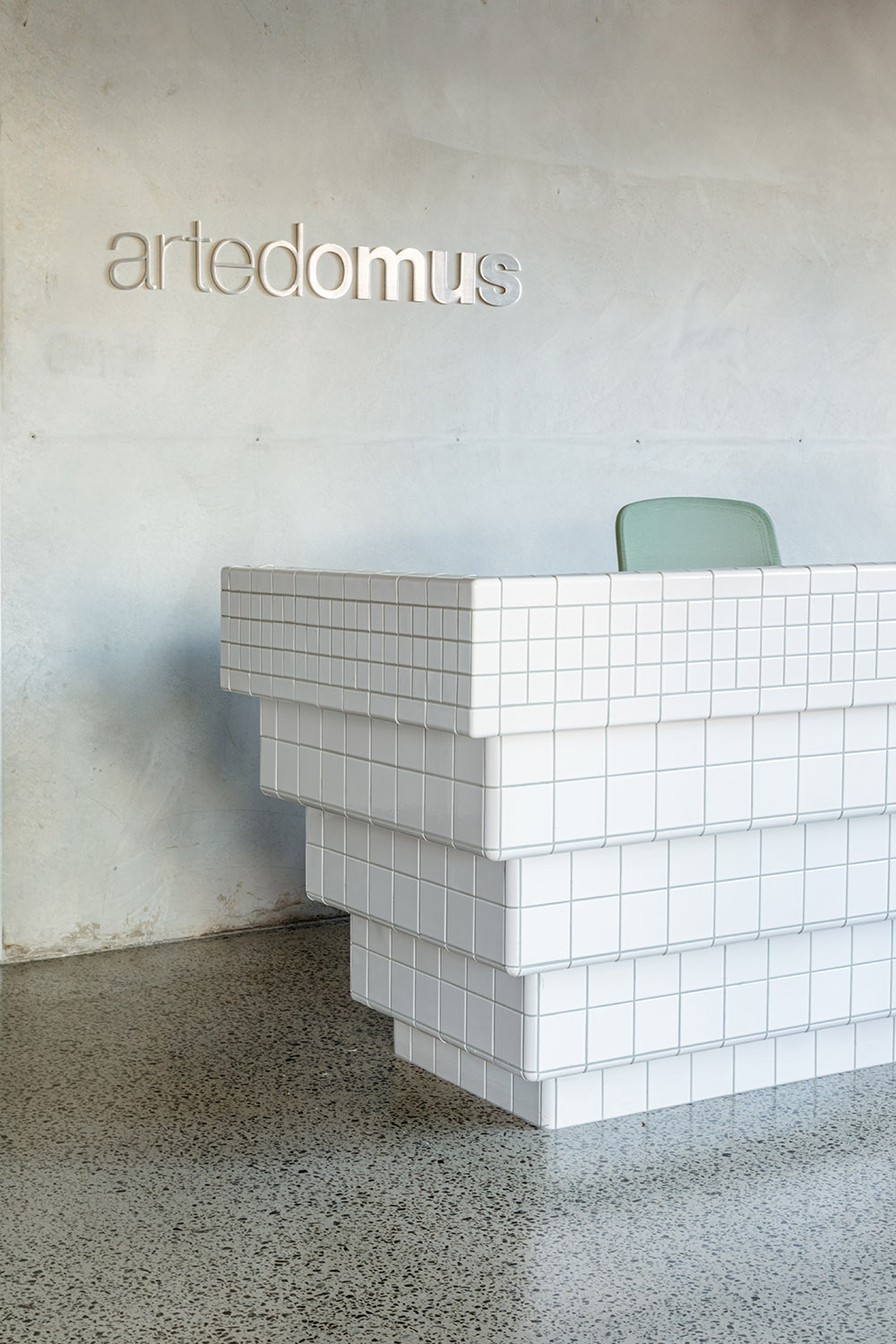
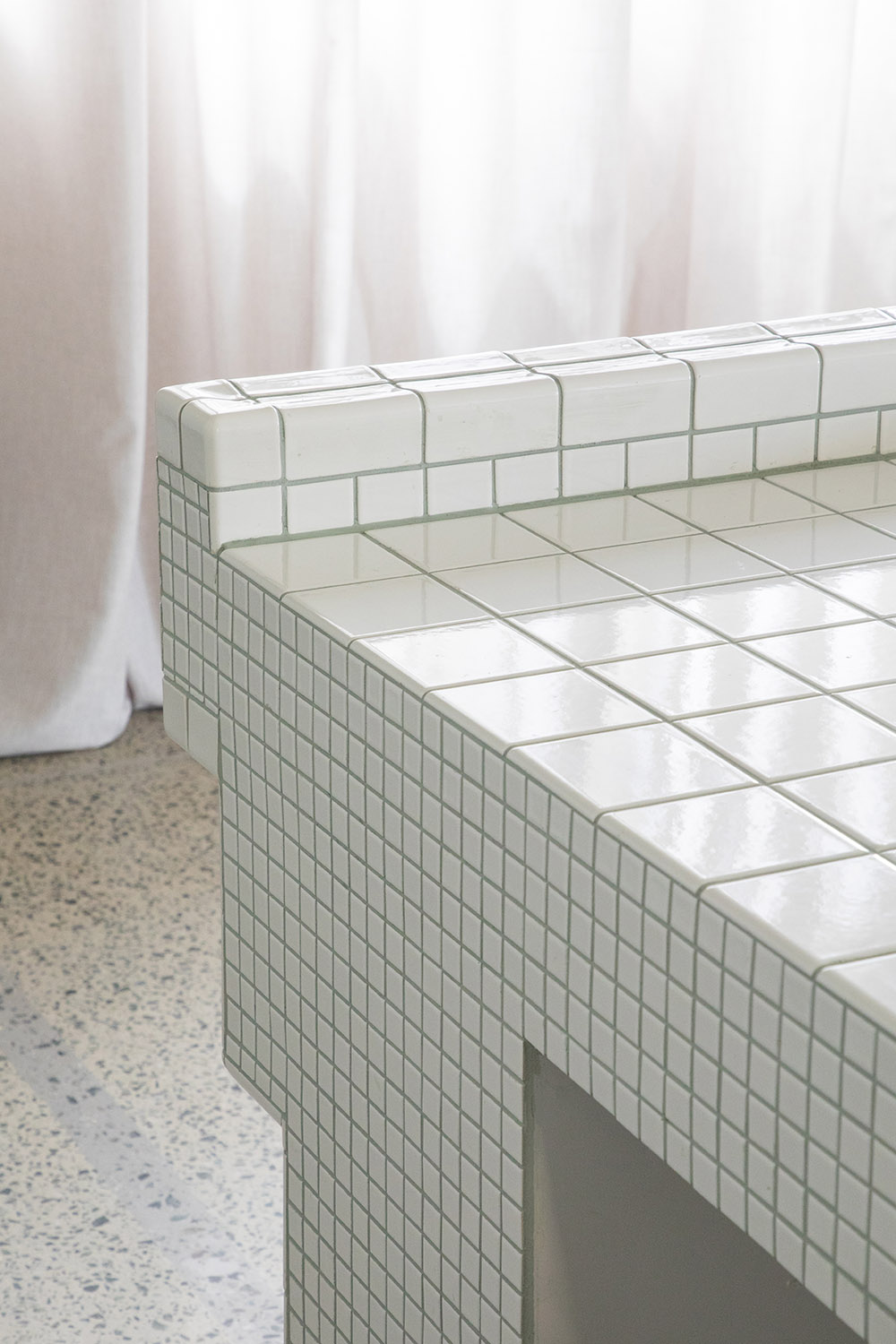
Koyama san, why do the INAX Nuance tiles work so well for this design?
We prioritised selecting [a tile range] with coving parts and corner trims. Due to the need for shape variations for joint placement, we chose INAX Nuance. Because the desk design is unique, we decided to use simple tiles, instead of INAX tiles with distinctive three-dimensional [surfaces or] kiln-fired colours.
Thomas, can you describe the process of collaborating with INAX on this custom design?
INAX provides such thorough installation instructions. The substrate had to be thoughtfully considered and through a series of rather beautiful sketches and calculations (beyond my humble capabilities), INAX did all the hard work. The drawings by Koyama san are really special.
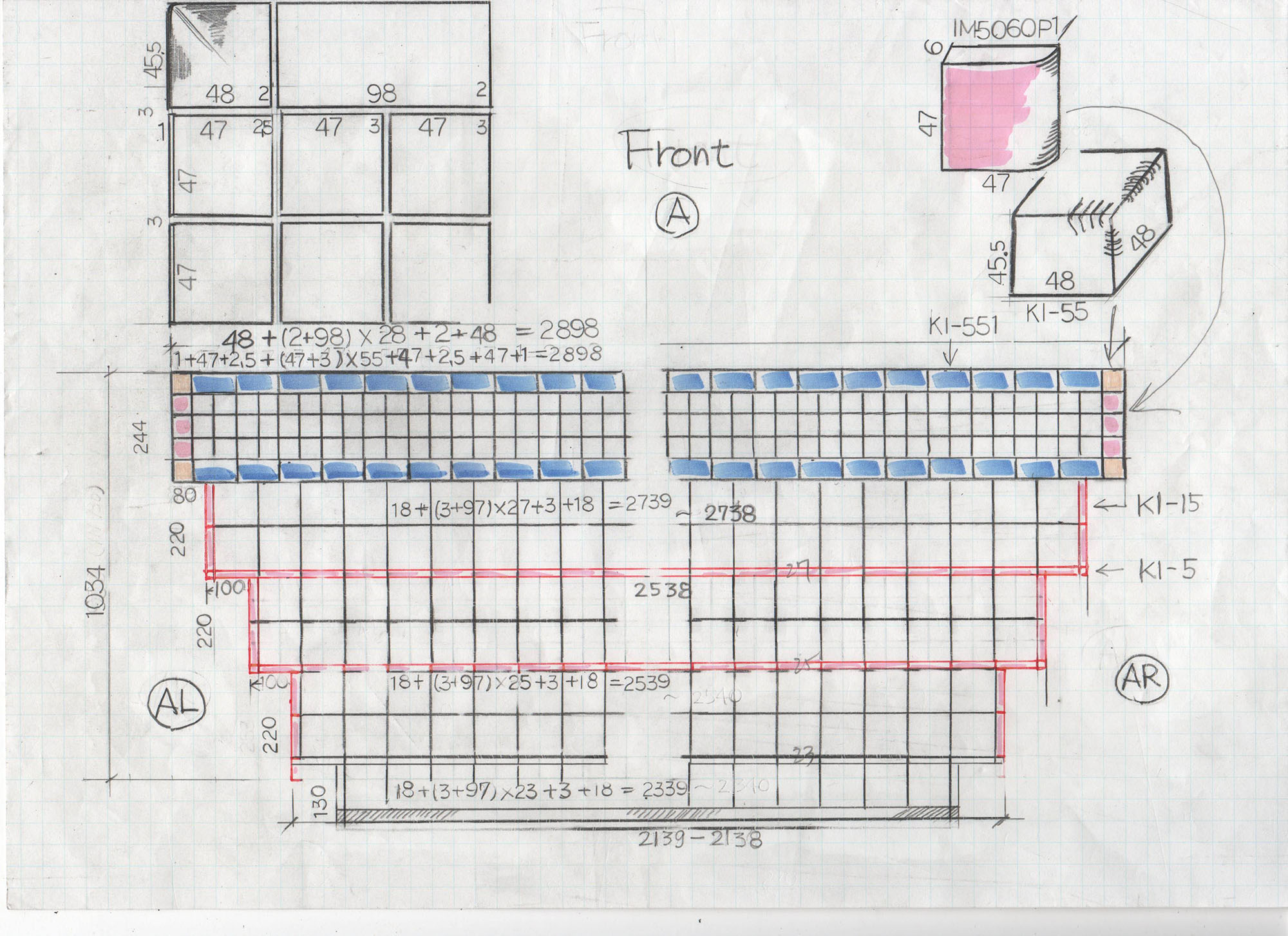
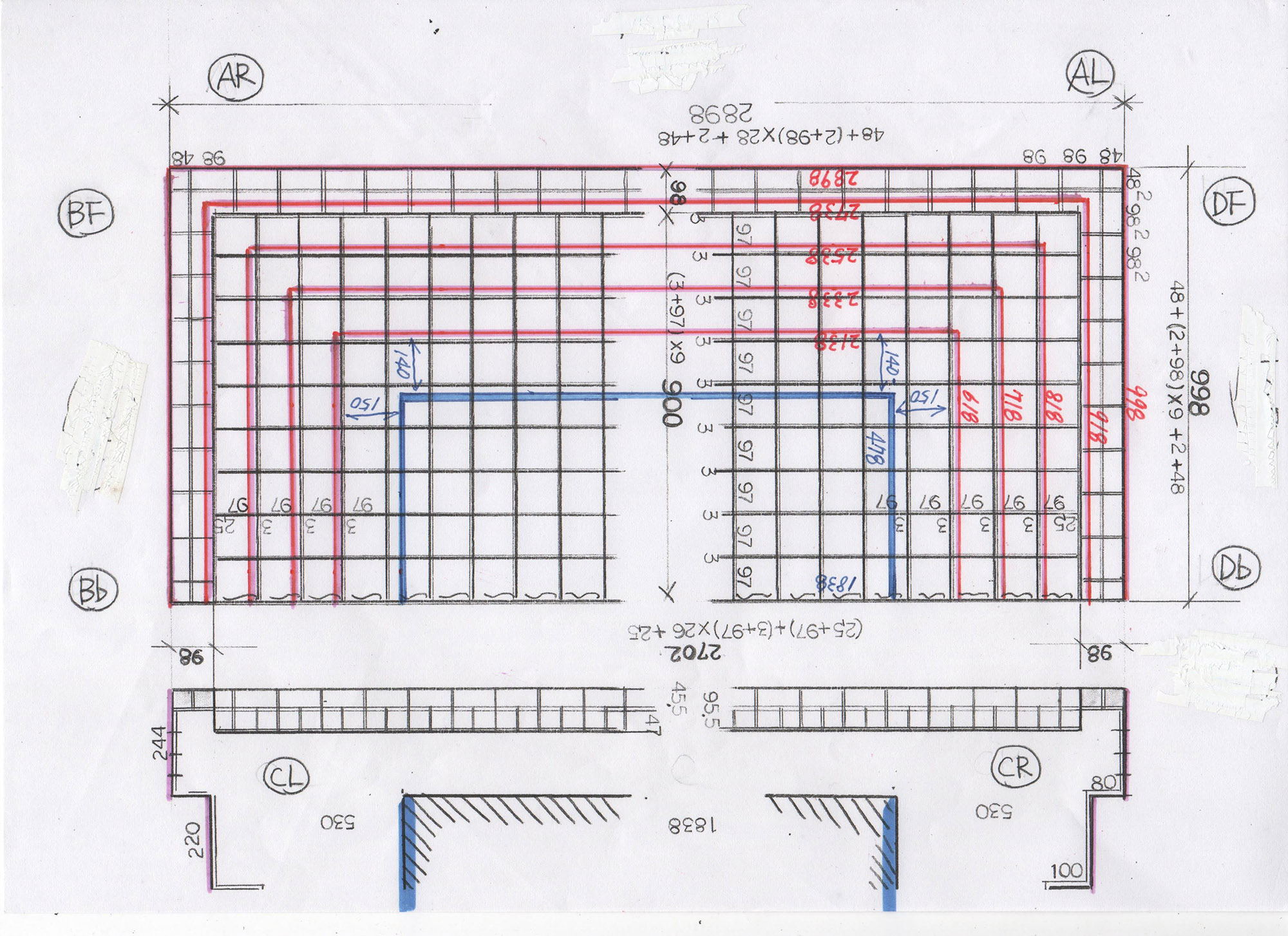
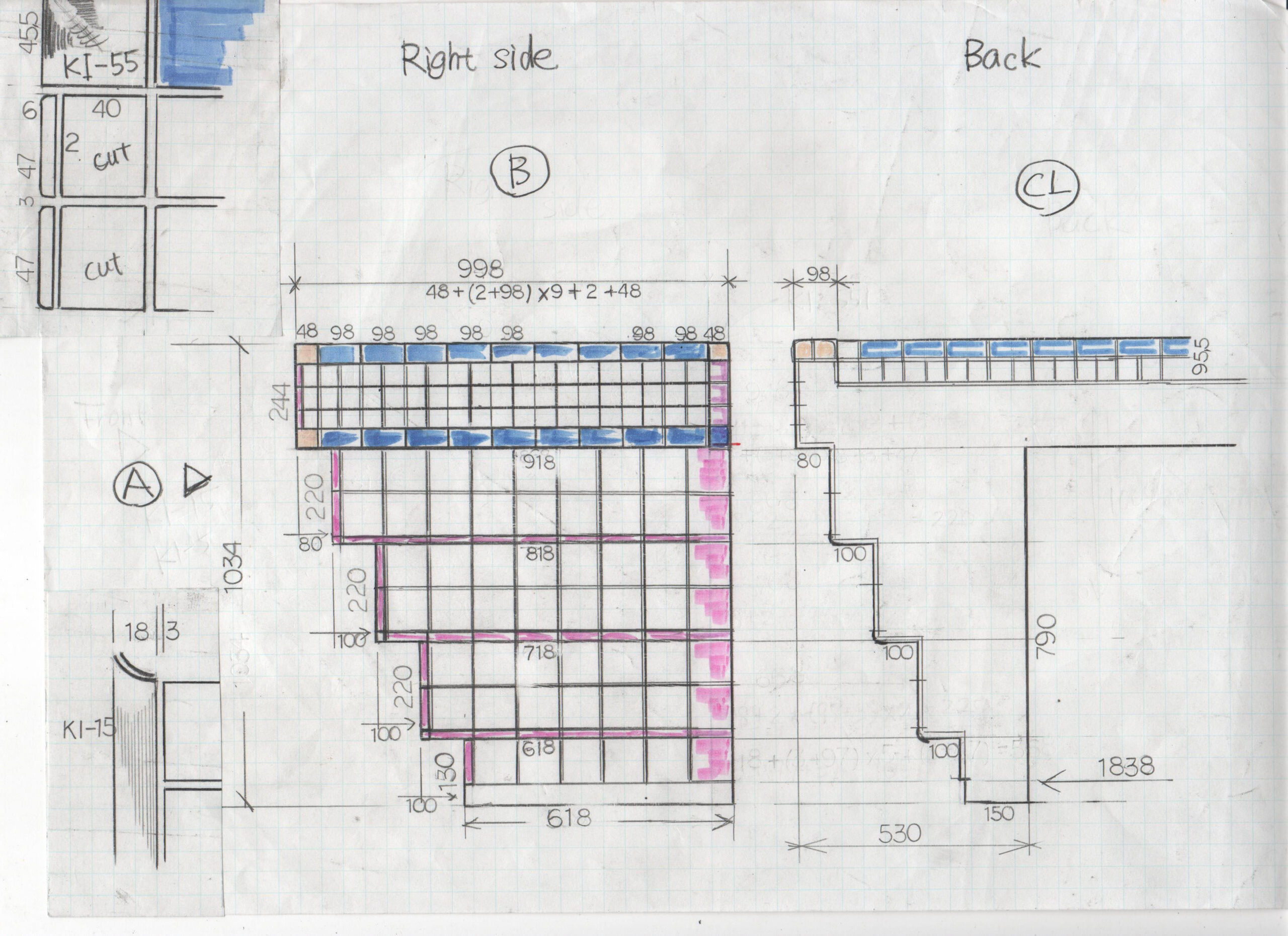
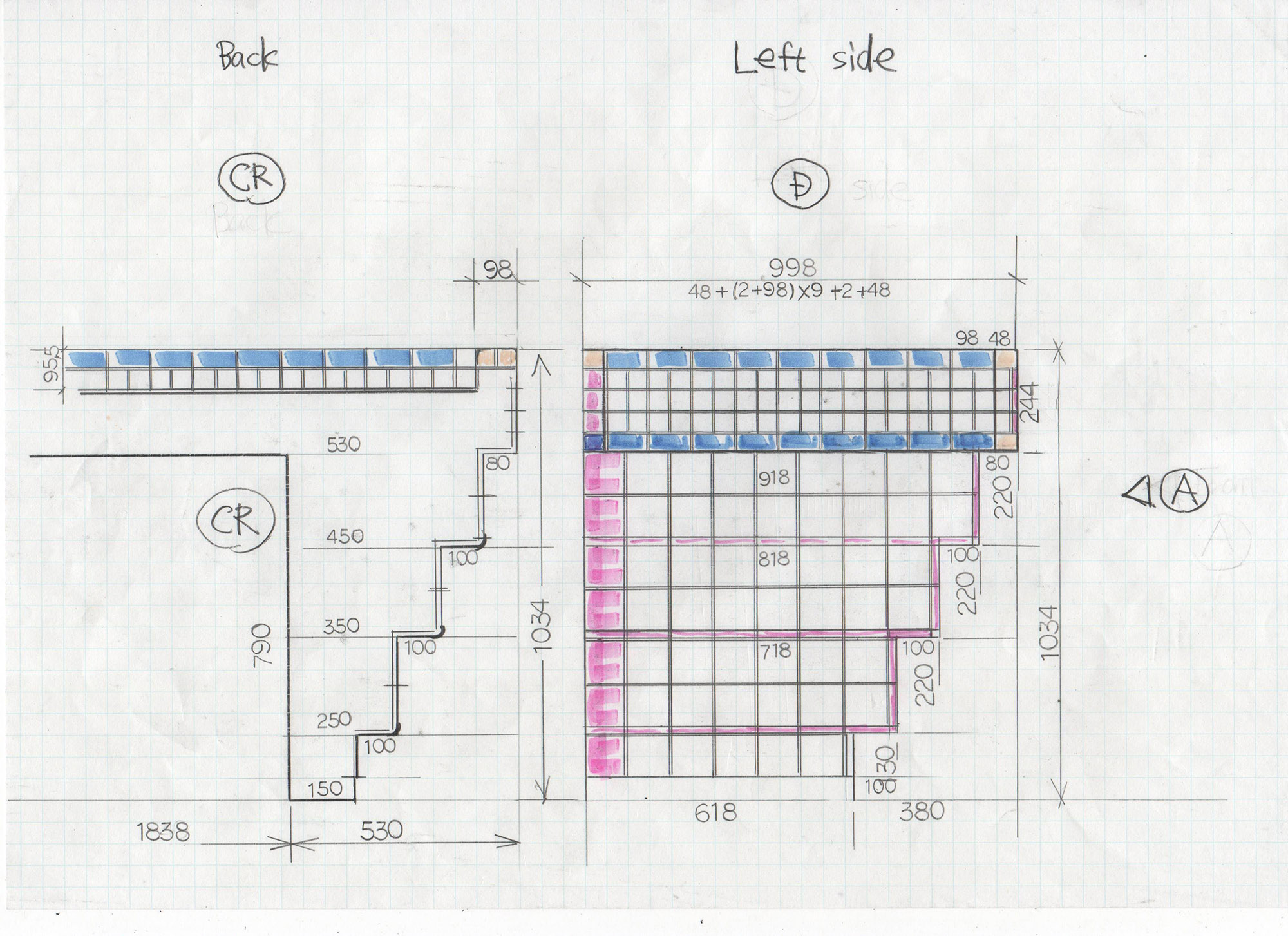
Koyama san, can you describe your process of aligning tiles to such a complex form?
The crucial first step was the positioning of the corner trim, ensuring the alignment of the joints. To grasp the final design, we purposely created hand-drawn diagrams, colouring them to check the three-dimensional image. From the manufacturing side, we proposed feasible external dimensions and structural dimensions, deciding on the layout in consultation with [Thomas].
Thomas, what made this the perfect piece for Artedomus’ Perth showroom reception zone?
Even though Artedomus was founded in Perth, and has had a presence there for decades, this new space felt like a fresh start. I wanted to present the first interaction with our physical space with this idea. It feels new, clear and organised – a symbol of our intentions in WA.
